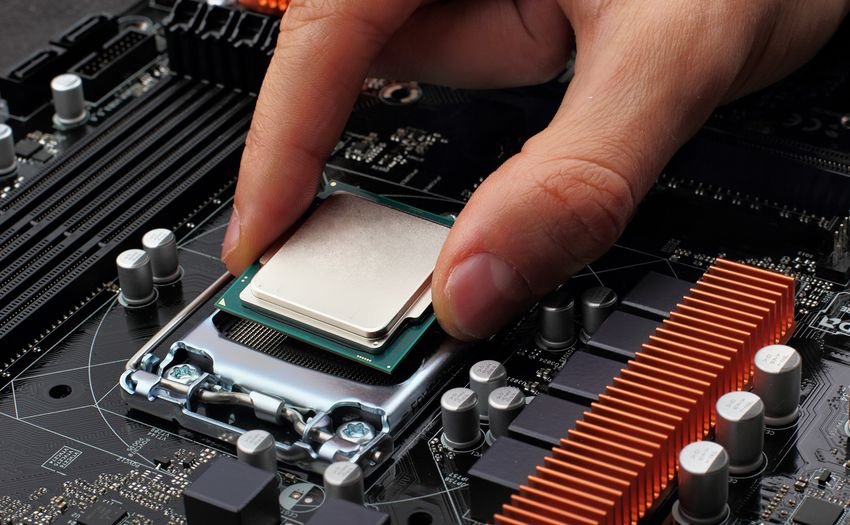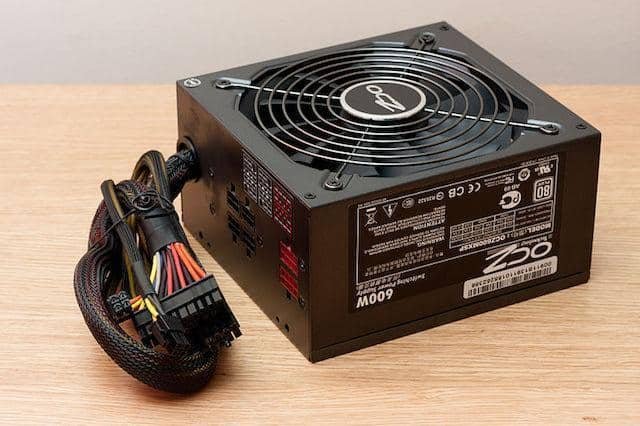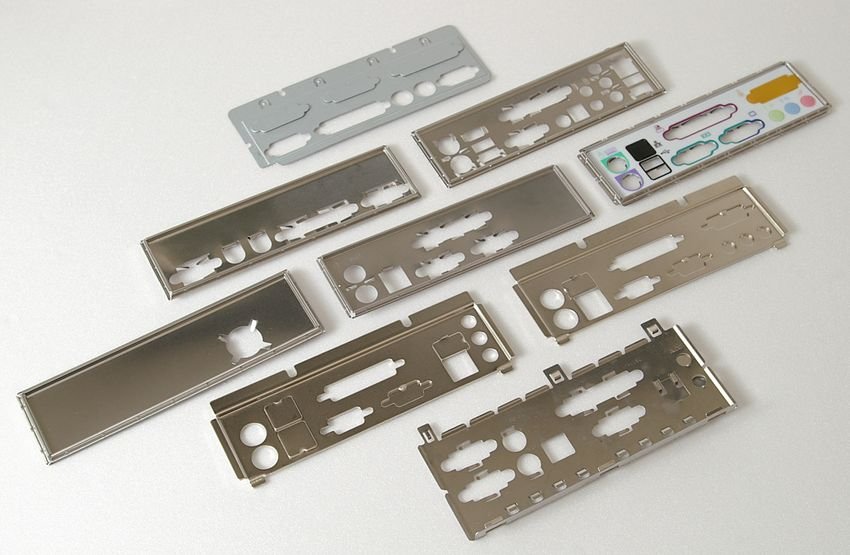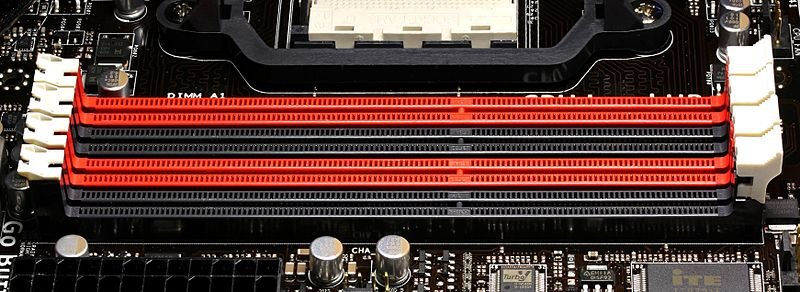Check out eleven common mistakes first-time users make when assembling one electronic computer so as to avoid them.

You have decided to buy or rather build a new computer. You did your market research, consulted them our instructions for the motherboard and the choice of individual materials of a computer and it's time to put them together. See how to avoid beginner mistakes.
And there are many mistakes made by those who attempt to assemble a computer for the first time. Let's take a look at the eleven most common ones as well as some tips on how to avoid them.
1. Purchase of incompatible parts
One of the most common computer building mistakes beginners make is choosing incompatible components. For example, they might map the wrong CPU or RAM to their motherboard.
For example, pairing an Intel Core i7-9700K CPU with an LGA 1150 motherboard won't work because the two are incompatible. Instead, you should choose an LGA 1151 socket motherboard if you are going to use an Intel Core i7-9700K processor.
Additionally, pairing a DDR3 RAM with a motherboard that only supports DDR4 is also a rookie mistake. All this can be avoided if you use a material compatibility checking site.
There are a number of sites that allow you to check for compatibility issues, such as PCBuilder and PCPartPicker.
Using a service like PCPartPicker is great for finding compatible parts, but there's another consideration when it comes to PC hardware: bottlenecking.
Bottlenecking refers to when one component limits processing power or graphics performance and usually occurs due to differences in the maximum capabilities of two components. Fortunately, there are several specialist websites that can do the checking for you, such as CpuAgent and Pc-Builds.
2. Buying a low quality and cheap power supply

There is a difference between buying an affordable power supply and buying a cheap and low quality one. However, if you're on a tight budget and your computer components aren't particularly power-hungry, it's fine to spend a little less on your power supply.
One of the best ways to choose a power supply is to estimate roughly how much power your components will use. For this, you can use one tool As the OuterVision, but there are many other options online for this calculation.
Also, if you use PCPartPicker to build your PC, it gives you a rough estimate of how much power the computer your and which power supply can accommodate all the components.
Another important thing is to check the +12v current rating of your power supply. This is where your graphics card, which is the most demanding component of your computer, will draw its power. Again, OuterVision will tell you about this amperage rating.
In addition, before buying a new power supply, check whether it is of high quality or not in the various comparison magazines such as HardwareSecrets . They test the most popular power supplies on the market and give you a review based on their thorough testing.
Finally, as far as the power supply is concerned, look at its cable lengths! Not all have a standard cable length, and if you use a box where the power supply goes into the bottom and the motherboard power is on the top of the box, the cable may not reach and you may need an extension.
3. Build on a large, clean and safe surface
The first thing you need to do before you start building your computer is to find a large, clean and safe space to work and assemble your computer. Any large table or desk will do.
Although it is possible to build a computer in a smaller footprint, it is not necessarily the best choice. There are a lot of cables, screws, and parts that you'll need to keep close and organized so you don't lose them when you actually need to install them.
Additionally, avoid building on surfaces where static electricity is likely. These include surfaces such as carpets and rugs. If you have a table, you don't need to worry about this step. Just be sure to place everything on the table itself, which is why you need a large sized table for this process.
Put the screws in a plastic box. If you leave the screws loose on the counter you can be sure that at some point you will be bent over on the floor looking for them... Make sure you have the screws collected in a plastic bowl so they don't get lost.
And don't pick up the parts by their pins. You probably won't burn them, but at least you'll transfer the grease from your fingers onto them.
4. Don't forget to install the Standoff screws
It seems silly, but it happens occasionally. Forgetting to install the motherboard retaining screws can be disastrous for your PC build. These essentially prevent your motherboard from making contact with the case and prevent it from shorting out.
If you forget to install them and only have 2-3 installed, enough to stand and turn on your computer, your data may be permanently damaged. This is the worst case scenario, but it does happen, so don't forget to install all the motherboard retaining screws.
Consider that their positions suggested by its manufacturer were not chosen at random !!
5. Don't forget the shielding on the motherboard I/O

Another common mistake novice computer builders make is forgetting to install it shield plate I/O (input/output) of the motherboard before installing the motherboard in its place.
If you forget to install the I/O shield, you have to unscrew and remove everything to install it, which is a big hassle.
To avoid this, just make sure you install the I/O shield before screwing the motherboard into the case.
6. Incorrect CPU installation
Some novice PC builders who have never built a PC before may make this mistake. Installing your CPU can damage or even break its pins, depending on how much force you used when installing it.
Fortunately, it is very easy to know the orientation of your CPU. All processors have markings on one of the corners of the CPU to let you know which part goes where on the motherboard. Once you find the marking, line it up with the marking on your motherboard's CPU socket and carefully install the processor.
If you're still unsure about installing your CPU, the video below contains instructions on what to look out for when installing an Intel or AMD CPU.
7. Failure to connect all cables
This is another common mistake among novice PC builders. If you fail to connect all the cables, your system will not turn on. To avoid this issue, make sure that whenever you install a component, you connect its cable to the motherboard.
If you think this will cause you problems during the construction process of the computer, mark all the installed components on a piece of paper so that you connect all their cables at the end. If your system won't turn on, make sure everything is connected and positioned correctly.
In the end, be sure to grab all the cables together (by area) so that the area around the motherboard is clean and well ventilated. Use plastic ties for this purpose.
8. Application of very thermal paste
If you are not careful with the installation of the thermal paste things can go bad. Applying thermal paste is an art. If it falls too far and is made of liquid metal, it can leak and cause damage. If it's too little, your computer will overheat and you may not realize that the lack of thermal paste is causing this.
Be careful because when you buy a new Intel model. This comes with his brush, which already has paste on it. He doesn't want another. The problem is if you decide to buy a better brush for your processor. There you will have to put the paste yourself.
9. Installing fans the wrong way
Most PC manufacturers have made this mistake at some point, and it's deeply frustrating as installing your case fans the wrong way can cause your system to overheat.
If your computer case comes with pre-installed fans, this shouldn't be a problem. At least, not until you want to install your own fans too. When it comes to cooling the computer, you want your case fans to work together, drawing cool air from the outside of the case in one direction and then pushing it out the other. Typically, if your computer case comes with fans, they will draw air from the front and push it out, although the opposite configuration is also viable.
If you want to add more case fans to your computer build, first learn how your existing fans work.
10. Incorrect RAM installation

In addition to choosing the right type of RAM for your motherboard, you also need to ensure that it is properly installed in place. This means that you press the RAM into the slot the right way, observing the notch partreatmentof RAM (which is different for each generation of RAM) and sometimes you'll have to push a little harder than you might expect.
Also, make sure you install the RAM in the correct slots. You will not experience this problem on a motherboard with two RAM slots. However, on a motherboard with four slots and two RAM modules, you should always leave a gap between them. Your motherboard may even indicate which RAM modules should be mapped.
Nothing bad will happen to your RAM if you use them in parallel slots. They just won't perform as expected.
11. Keep your warranty
OK, this isn't specifically about building computers, but it sure helps if something goes wrong. Make sure you keep all of your computer's hardware warranty documents in one place and register your details online for the hardware that requires it, as you may get an extra year of coverage for doing so.
Avoid These PC Building Mistakes!
These aren't the only mistakes novice PC builders make. In fact, as more computer hardware comes on the market, newbies will continue to make new mistakes that need to be fixed.
However, even though these tips are aimed at newbie PC builders, believe it or not, even experienced PC builders make the same mistakes from time to time.
Plus, as new hardware comes out and designs change, we all have to learn new PC building techniques, so the learning never stops.





